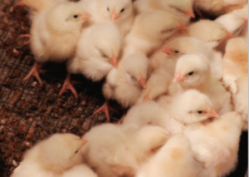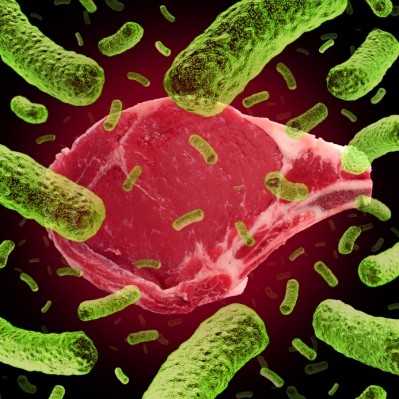Reports from IPPE 2016
IPPE delegates hear how feed additive may reduce salmonella virulence in poultry

“What we found is that the XPC produces a low prevalence of salmonella, but it also reduces its virulence and antibiotic resistance,” said Steve Carlson, professor of biomedical sciences at Iowa State University who has been working with the Iowa based Diamond V.
The ability to reduce the virulence of salmonella is a trait that Carlson has been tracking for several years, he told Feed Navigator. “I spent the last 18 years working on this, and this is the first time that I’ve found something that actually worked in an animal.”
Previously, he studied salmonella with the US Department of Agriculture (USDA).
“That’s what I always look for when I look at new ways to mitigate salmonella,” he said. “So far all of my ideas have failed in that aspect, and so it was refreshing to find something that actually could fill that void that I’d been looking for.”
Why virulence?
The goal of seeking to reduce the virulence, or amount of bacteria needed to make someone sick, of a microbe like salmonella is not to continue killing the organism, said Carlson. Instead it seeks to find a way to make the bacteria less damaging the host animal.
“Whenever you attempt to kill salmonella, say for instance with an antibiotic, it will figure out a way around it – it will develop resistance,” he said. “Instead of directly trying to kill it by inhibiting its virulence, you’re shifting its lifestyle into where it’s more of a commensal organism.”
The change may be a way to call a ‘truce’ with the bacteria, he said. “These pathogenic bacteria have time on their hands; they replicate every 40 minutes, so they can become resistant to something in a matter of days,” he added.
Decreasing the virulence makes the bacteria act like another microbe in a bird’s intestinal tract instead of causing damage, he said. Reducing the virulence also makes it safer for people.
“Should that salmonella get from the animal into a human who ingests the flesh of a bird or cattle, it’s much less likely to cause disease in a downstream human host,” he said. “It takes a much bigger dose to make a human sick.”
Experiment details
In the study presented at IPPE, day-old broiler chicks were infected with salmonella, and at three weeks they started getting either a control diet or one that included XPC, said Carlson.
Birds were on the separate diets for four weeks, he added. Every week throughout the experiment there were tests done to see how much salmonella was present in the birds.
“At the end of the study we euthanize the birds and see how much salmonella we can recover from their intestinal tracts,” he said. “As we did the study, we found that the virulence would go down temporally as we fed the XPC, and the same thing in the salmonella that we recovered at the end, the virulence went down.”
The researchers also tested the ability for the bacteria to infect mammalian cells, he said.
“We would look at the capabilities of the salmonella we would recover from these animals fed XPC, and we found that the number was probably five-fold reduced compared to animals fed the control diet and also compared to the invasiveness of the strain before it goes into the animal,” he said.
The group also tracked the genetic changes being made in the bacteria, said Carlson. “There’s one gene that is really the master switch for the invasion process, and that gene is turned off or turned down in the birds fed the XPC,” he added.
Additionally, the strain used to infect the birds was known to be resistant to certain antibiotics, he said. By the end of the trial, some of that resistance also had been reduced.
“We know what the genetic island is for that resistance, and that island is disappearing from the strain as time goes on,” he said.
The next step for the work is a series of paired house field trials using birds in a production setting, he said. Those birds again will have a control and a test diet, but they won’t be facing an explicit disease challenge.








